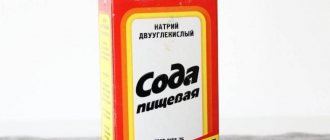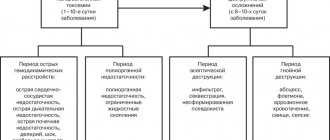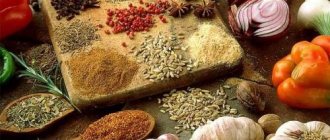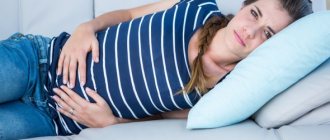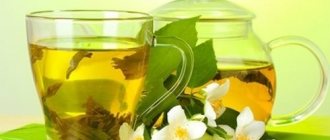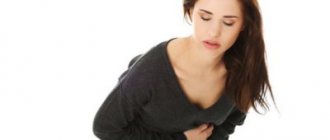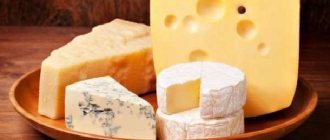To be highly effective, first aid for hepatic colic should be carried out as quickly as possible after alarming symptoms are detected in the victim.
Clinical experience proves that colic itself is not as bad as what it signals. Such deviations are characteristic of chronic severe pathologies of the gallbladder. It is extremely important here not to limit ourselves only to leveling out the dangerous signs of the disease.
To qualitatively improve your health, you need to undergo a detailed examination using ultrasound. This will allow you to understand in detail the cause of the pathology, as well as assess the extent and extent of the lesion.
Causes
The group of causes of hepatic colic includes:
- biliary dyskinesia;
- presence of stones;
- giardiasis;
- inflammation of the ducts;
- congenital anomalies of the structure of the biliary tract.
The triggering factor for hepatic colic can be:
- alcohol abuse;
- starvation;
- a sharp decrease in body weight due to serious illness or adherence to a strict diet;
- eating fatty, fried foods and spicy seasonings. After eating, the gallbladder begins to contract, thereby pushing stones into the ducts. The pathogenesis of pain is represented by hypertension, which develops as a result of obstruction of the lumen of the excretory tract and disruption of bile outflow;
- parenteral nutrition;
- heavy physical activity;
- severe psycho-emotional stress;
- the beginning of the menstrual cycle (due to changes in hormonal levels in the bloodstream).
The underlying pathology may be liver disease of infectious or toxic origin, obesity, diabetes or hemolysis of red blood cells. In 30% of cases, biliary colic occurs at night.
The main task of diagnosis is to distinguish the pathological condition from an attack of calculous cholecystitis, in which the pain syndrome is caused by the inflammatory process.
Why do gallstones form?
The exact cause of cholelithiasis has not yet been fully elucidated. Only a few factors are known that increase the likelihood of its occurrence.
- Genetic: family predisposition increases the risk of cholelithiasis by 4-5 times;
- Congenital anomalies of the biliary tract;
- Gender - the risk of developing gallstones in women is approximately 2-3 times higher, which is associated with the influence of estrogens on the ability to form gallstones;
- Age - the maximum frequency of clinical manifestations of cholelithiasis is recorded at the age of 40-69 years;
- Dietary (high-calorie diet, poor in plant fiber, as well as with an excess of simple carbohydrates, animal proteins, foods containing cholesterol);
- Use of medications (oral contraceptives, fibrates, ceftriaxone, somatostatin, nicotinic acid);
- Concomitant diseases and conditions (obesity - a tendency to form gallstones in persons with a body mass index of more than 30 is 3 times higher, type 2 diabetes mellitus, hypothyroidism, cirrhosis of the liver, etc.);
- Pregnancy - the risk of developing cholelithiasis increases during pregnancy, especially with repeated pregnancies (the likelihood of stone formation increases by 10-11 times). During pregnancy, bile heterogeneity, or the so-called biliary sludge, develops in 20-30% of patients, stones - in 5-12% of cases.
There is a so-called 5F rule that describes patients at greatest risk of developing stones:
1. Female (female);
2. Fat (overweight/obesity);
3. Forty (age 40 years or more);
4. Fertile (fertile women - that is, pregnant and giving birth);
5. Fair (light-skinned blondes).
Symptoms of hepatic colic
Clinically, gallbladder colic is manifested by symptoms such as:
- dyspeptic disorders. The patient is worried about flatulence, nausea and frequent vomiting of bile, which does not bring relief. The involvement of the pancreas in the pathological process is indicated by its indomitable nature;
- acute pain is the main symptom of the pathology. It is localized in the area of the right hypochondrium (bladder projection) or epigastrium, spreading to the right arm, shoulder area and scapula. The pain may be stabbing or tearing. The patient cannot find a comfortable position to reduce its intensity;
- yellowness of the skin as a sign of bile stagnation;
If an attack of biliary colic lasts more than a day, acute cholecystitis should be suspected. It is characterized by hyperthermia above 38 degrees. Sometimes pain can spread to the left side of the chest, reminiscent of an angina attack.
Features of manifestation in men and women
If we compare the clinical picture of biliary colic in opposite sexes, there are no definite differences. One has only to note that in women, pregnancy can provoke colic, which is associated with displacement of internal organs due to an enlarged uterus.
In turn, a man is more difficult to tolerate dietary restrictions, and therefore more often violates medical recommendations for diet therapy. As a result, both an attack of colic and inflammation of the gallbladder can occur. In addition, alcohol plays an important role, the abuse of which is more common among men.
How does the liver work?
The liver is the largest gland in humans. It is located in the upper floor of the abdominal cavity on the right. It consists of two main lobes - right and left, which in turn are divided into 8 segments.
In an adult, it weighs about 1/40 of the total body weight (approximately 1.6 kg in men and 1.2 kg in women). The liver has a dual blood supply: approximately 80% of the blood entering the liver comes from the portal vein (venous blood collected from all unpaired abdominal organs), the rest (oxygenated arterial blood) comes from the hepatic artery. Having entered the portal of the liver, both vessels give rise to multiple branching smaller vessels. At the exit from the liver, 3-4 hepatic veins are formed, which flow into the inferior vena cava.
The main structural unit of the liver is the hepatic lobule, which consists of liver cells - hepatocytes. This cell is one of the most important biochemical laboratories of the body. The hepatocyte takes part in the metabolism of proteins, carbohydrates, fats, bile acids, and vitamins. Neutralizes toxic substances coming from the intestines, followed by the release of associated products into the intestinal lumen. An important function of the hepatocyte is the synthesis of bile, which is involved in digestion.
Diagnostics
To correctly diagnose the disease and prevent the recurrence of pain, it is necessary to carefully study the history and conduct additional examination. First, the doctor asks the patient about the clinical symptoms that bother him, as well as the characteristics of their appearance and progression.
Particular importance should be given to information about past illnesses, chronic pathology, the presence of similar attacks previously, as well as the nature of nutrition and alcohol abuse. With cholelithiasis, episodes of colic gradually become more frequent, longer and more intense.
Pathology of the biliary tract is indicated by the appearance of pain in the area of the right hypochondrium after errors in diet, heavy exercise or drinking alcohol.
The patient may also be bothered by nonspecific signs of digestive dysfunction, such as nausea, bitterness in the mouth, bloating and heaviness in the gastric region.
During a physical examination, the doctor focuses on a slight yellowness of the skin and mucous membranes, which indicates stagnation of bile. To reduce pain, the patient lies down on the couch and takes a position with his knees brought to the chest. When trying to palpate the abdomen, tension in the abdominal wall is noted as a protective reflex.
To confirm the diagnosis, an ultrasound examination is prescribed, which allows you to examine the hepatobiliary tract (biliary tract, liver). The doctor detects stones, notes an increase in the size of the bladder and stretching of the walls.
During cholecystography, a contrast agent is administered intravenously. Thus, the specialist visualizes a “disabled” bladder, which confirms the presence of obstruction in the ducts.
During laboratory diagnostics, an increased ESR and an increase in leukocytes are detected. After an attack, bile pigments can be detected in the urine, which indicates the development of jaundice. Sometimes there is an increase in amylase.
Differential diagnosis should be carried out with acute acalculous cholecystitis, renal colic, intestinal spasm, inflammation of the pancreas, appendicitis and gastric ulcers.
Emergency care for biliary colic
To quickly stop a pain attack, you need to know the cause of its occurrence. The patient is hospitalized in the gastroenterology hospital. An emergency treatment complex allows you to relieve spasm of the ducts, after which the bile outflow is restored and the pain in the area of the right hypochondrium ceases.
Hospitalization is mandatory for all patients with biliary colic, as the attack can recur at any time. So, the doctor prescribes:
- complete physical rest;
- fast for a day, after which the nutritional diet should correspond to diet No. 5;
- First aid for biliary colic is antispasmodics (papaverine, drotaverine). If nausea and frequent vomiting bother you, it is recommended to additionally administer metoclopramide;
- analgesic drug, for example, ketorolac, baralgin.
If colic continues for more than six hours, surgery is considered.
The surgical method is also used in case of frequent attacks of pain. Treatment consists of removing the gallbladder. For this purpose, laparoscopic method or laparotomy (in case of complicated course) can be used.
In most cases, preference is given to laparoscopy, as it can significantly reduce the rehabilitation period due to the low traumatic nature of the operation. In addition, the technique has a good cosmetic result, and relapses are less common. Your doctor may also recommend crushing stones using extracorporeal shock wave lithotripsy.
Typically, surgical intervention, if the attack is successfully controlled with medication, is carried out within a month. If colic does not recur, the doctor takes a wait-and-see approach.
It is impossible to treat an attack at home due to the high risk of developing jaundice and a sharp deterioration in general condition. Not a single folk recipe can quickly provide effective help and reduce pain.
If the patient has repeated attacks of colic, before the ambulance arrives, you can independently take antispasmodic drugs and apply a warm heating pad to the liver area. However, this method is strictly prohibited for cholecystitis.
Possible complications
When the lumen of the biliary tract is completely obstructed by a large stone, obstructive jaundice develops. Clinically it manifests itself:
- discoloration of stool;
- itching;
- darkening of urine;
- yellowness of the skin and mucous membranes. Its severity can reach an orange tint.
Laboratory tests reveal an increase in the level of total bilirubin and its direct fraction in the blood. Bile pigments are detected in the urine. Using ultrasound, it is possible to visualize the calculus and assess the extent of damage to the bladder and ductal system.
After surgical removal of the stone, bile flow is restored, and the signs of jaundice regress.
Another complication is peritonitis. The mechanism of its development is as follows:
- obstruction of the duct with a large stone;
- spasm of the biliary tract;
- disruption of nutrition in the wall on which pressure is exerted by the stone;
- tissue necrosis;
- violation of the integrity of the wall;
- penetration of bile into the abdominal cavity.
How are the bile ducts arranged and how do they work?
The bile ducts are a system of ducts that originate from hepatocytes and gradually gather into interlobular, segmental and right and left lobar ducts, which unite into the common hepatic duct.
One of the stages of bile removal is its accumulation in the reservoir - the gallbladder. The main function of the gallbladder is to concentrate bile and release it into the lumen of the duodenum during digestion. The volume of this organ is about 80 ml.
The gallbladder is located on the lower surface of the liver. It is a hollow muscular organ, externally covered with a serous membrane and internally lined with mucous membrane. The structure of the gallbladder is divided into the bottom, body and neck of the bladder, which passes into the cystic duct.
Diet
Regardless of the choice of treatment tactics, a conservative or surgical method, an integral part of the therapy is a dietary regimen. This diet allows you to reduce the load on the hepatobiliary tract and facilitate bile outflow. In turn, this prevents changes in the composition of bile and the process of stone formation.
Basic principles of diet No. 5:
- complete abstinence from alcoholic beverages, including low-alcohol ones;
- exclusion of fatty milk, meat and fish products;
- a ban on hot seasonings, marinades, smoked foods, pickles and canned food;
- refusal of fresh baked goods, cream products and chocolate;
- exclusion of coffee;
- a ban on legumes, mushrooms, and products with oxalic acid.
The diet should consist of:
- low-fat foods;
- vegetables;
- yesterday's baking;
- various porridges from buckwheat, oatmeal, pasta or rice;
- egg whites;
- soups, low-fat broths;
- biscuits.
Every day you need to drink at least two liters of weak green tea, still mineral water, jelly or diluted juice. The amount of salt per day is limited to 7 grams. Meals should be fractional, small portions. Therefore, it is recommended to eat every two hours. This makes it possible to regulate bile flow and prevent stagnation.
Dishes should have a puree-like consistency. Cooking is carried out using steam, by boiling or baking.
After surgery, only liquid is allowed on the first day. Then the diet gradually expands to include pureed foods. Provided the postoperative period is normal, the patient is transferred to diet No. 5, which must be followed for life.
How are gallstones formed?
The process of stone formation is quite well studied. The key links are:
- An increase in the lithogenicity of bile (the ability to form stones) means an increase in the content of cholesterol and bilirubin in it.
- Impaired contractile function of the gallbladder.
- Increased pressure in the bile duct system.
Mucin is a natural gel, constantly secreted by the wall of the gallbladder; when lithogenicity increases, it begins to “absorb” cholesterol crystals, thereby forming a “fossilization nucleus.” The formed suspension, with impaired contractile function, continues to attach salt crystals encrusted with calcium salts. Thus, gallstones can grow up to 5-7 mm per year.
Prevention
With timely assistance, the prognosis is favorable. Preventive measures can prevent the process of stone formation in the biliary tract and reduce the risk of colic. These include:
- early diagnosis of diseases of the digestive system;
- proper nutrition;
- dosed physical activity;
- giving up alcohol;
- normalization of body weight;
- avoiding long periods of hunger.
The recommendations listed are quite simple and do not require effort to follow. They make it possible not only to normalize bile flow, but also to improve the functioning of the entire digestive system.
Gallstone disease: treatment
The attending gastroenterologist from the NEARMEDIC clinic will select a treatment for you that will help improve your well-being, quality of life, and reduce the risk of exacerbation of the disease and complications. In many cases, a balanced diet is sufficient; diet No. 5 is recommended.
If surgical intervention is required, the doctor will help you understand the essence of the operation and choose the appropriate method. Currently, laparoscopic operations are widely used, after which a person quickly recovers and returns to normal life.
NEARMEDIC employs qualified specialists for you, highly effective drugs, modern equipment and advanced technologies are available. Everything to keep you healthy.
